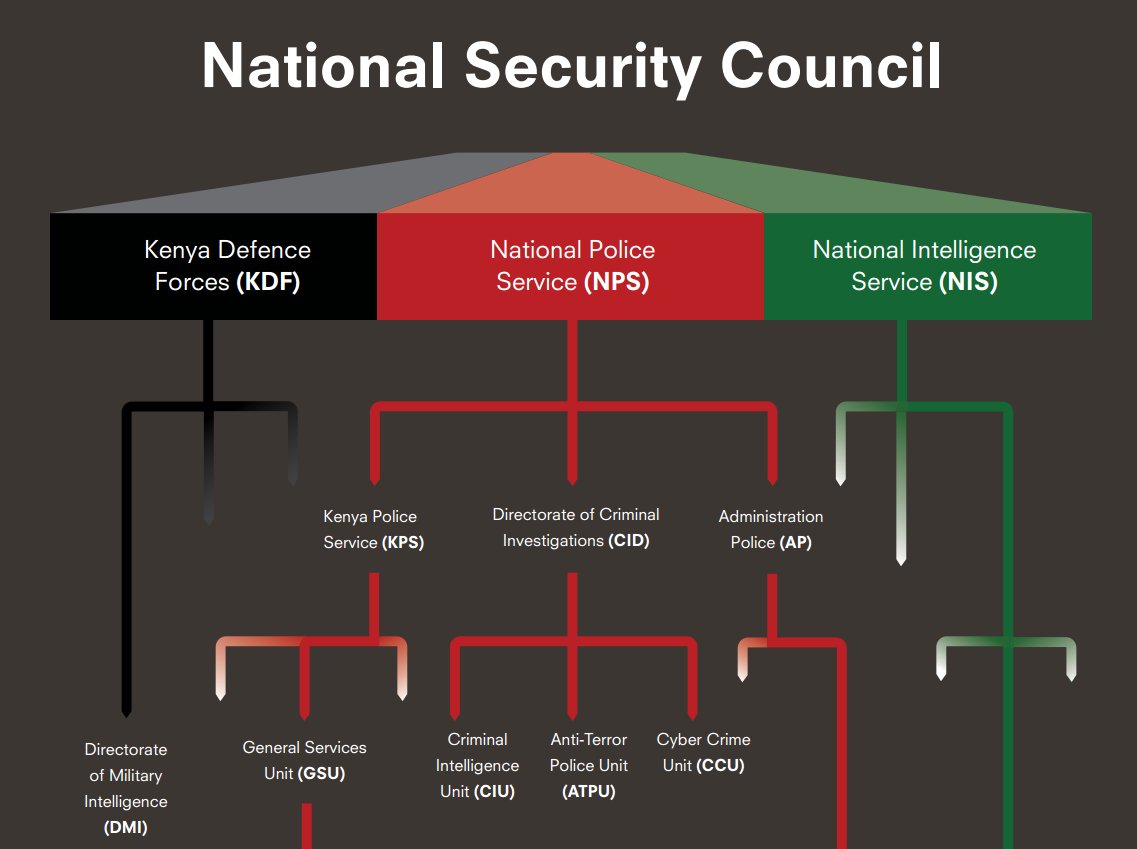https://privacyinternational.org/sites/default/files/track_capture_final.pdf

Privacy International interviewed 57 sources for their report on the link between surveillance and torture and murder in Kenya, including 32 law enforcement, military or intelligence officers with direct firsthand knowledge of the programs.
Kenya has always had an overreaching and often abusive domestic surveillance apparatus -- a legacy of British colonial rule. But the 21st century has proved fertile for those who wish to expand the capacity of police and spies to conduct warrantless, unaccountable programs of murder and torture, thanks to the real threat of terrorism from Kenya's failed-state neighbours and the ready availability of high-tech spying tools bought in from Israeli cyber-arms dealers.
The Privacy International report documents a grotesque, widespread campaign of domestic terror led by the country's National Intelligence Service, and abetted by the Parliament (who have granted domestic spies far-reaching powers whose minimal oversight can be ignored with impunity), telcoms companies (who allow spies to tap directly into their infrastructure, host political officers with on-site offices at their headquarters, abet the placement of undercover spies in their workforce, and abet the circumvention of the minimal checks and balances on surveillance powers) and a variety of national and local police forces, who serve as death-squads and torturers.
As things stand, most Kenyan surveillance is targeted, because the intelligence services lack the budget to undertake NSA-style mass surveillance. But with the impending elections -- and the threat of a return to earlier post-election violence -- the country's spies have been allocated a budget to conduct continuous, population-scale surveillance of the whole country, and have bought tools to do it, again, from Israeli cyber-arms dealers.
The Kenyan police and spies routinely smear anyone who questions this regime as being disloyal to Kenya. Nevertheless, the Privacy International report ends with a set of excellent and obvious recommendations for all levels of Kenyan government to rein in the turnkey surveillance state that has grown up without debate or deliberation.
Communications surveillance is being carried out by Kenyan state actors, essentially without oversight, outside of the procedures required by Kenyan laws. Intercepted communications content and data are used to facilitate gross human rights abuses, to spy on, profile, locate, track – and ultimately arrest, torture, kill or disappear suspects, as this report documents. The Kenyan constitution guarantees freedom from torture, cruel, inhuman and degrading treatment and the right to a fair trial as fundamental rights.
These abuses have marred Kenya’s counterterrorism operations and further eroded Kenyans’ already weak trust in the agencies responsible for protecting them. This investigation also explores the potential impact of unaccountable communications surveillance on the upcoming 2017 election cycle.
The National Intelligence Service (NIS) regularly shares information with police agencies, some of whom have been engaged in gross human rights abuses, according to multiple independent media, civil society and Kenya National Commission on Human Rights (KNHCR) investigations. The NIS appears to have direct access to communication networks across Kenya. This direct access means that the network operator itself has little to no knowledge of the interception of communications occurring on its network, and therefore no real ability to check these powers or report potentially abusive use of communications surveillance powers. The role of the Communications Authority in facilitating direct access in Kenya requires more scrutiny. All responses to Privacy International’s requests for comment are included in the text.
These abuses have marred Kenya’s counterterrorism operations and further eroded Kenyans’ already weak trust in the agencies responsible for protecting them. This investigation also explores the potential impact of unaccountable communications surveillance on the upcoming 2017 election cycle.
The National Intelligence Service (NIS) regularly shares information with police agencies, some of whom have been engaged in gross human rights abuses, according to multiple independent media, civil society and Kenya National Commission on Human Rights (KNHCR) investigations. The NIS appears to have direct access to communication networks across Kenya. This direct access means that the network operator itself has little to no knowledge of the interception of communications occurring on its network, and therefore no real ability to check these powers or report potentially abusive use of communications surveillance powers. The role of the Communications Authority in facilitating direct access in Kenya requires more scrutiny. All responses to Privacy International’s requests for comment are included in the text.